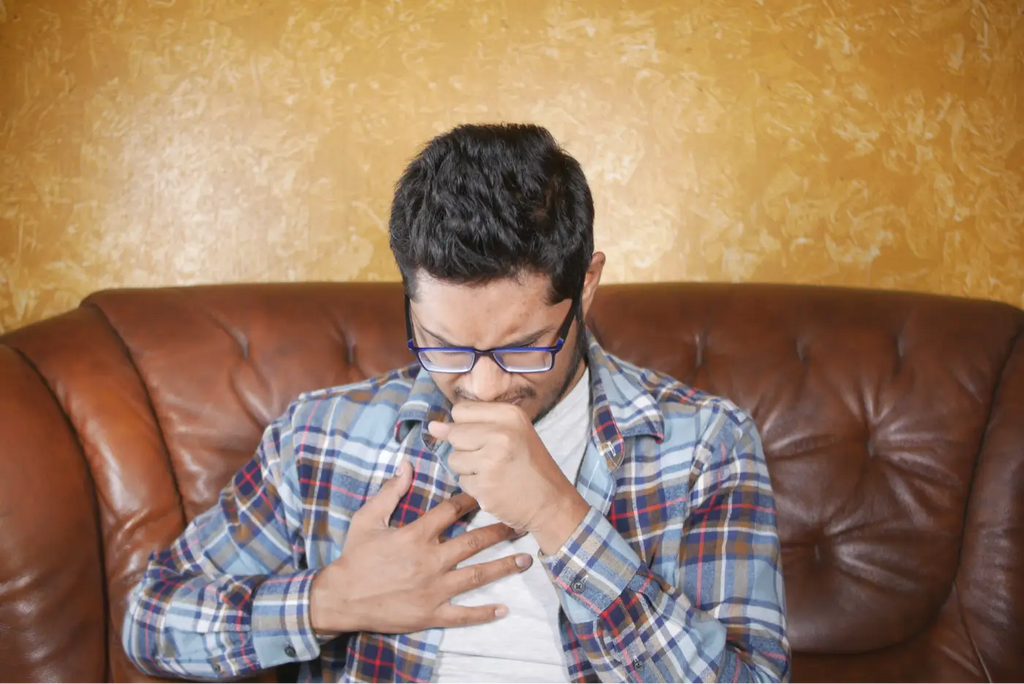
COPD, or chronic obstructive pulmonary disease , is a respiratory disease that affects the airways and lungs and is characterized by progressive obstruction of the bronchi, making it difficult to breathe.
To understand more easily what COPD is, we are going to see together the causes, symptoms and treatments of this condition.
You can also find our dedicated article to easily understand the different respiratory diseases .
What is COPD?
COPD is an umbrella term for a group of lung conditions that cause airflow limitation in the lungs.
This obstruction mainly results from inflammation and obstruction of the bronchi, as well as damage to the pulmonary alveoli.
COPD is often associated with two types of disease:
- Chronic bronchitis : persistent inflammation of the bronchi, causing excessive mucus production and a wet cough.
- Emphysema : destruction of the walls of the pulmonary alveoli, leading to a reduction in the exchange surface between air and blood.
You can find our dedicated article to easily understand what emphysema is .
Causes and risk factors of COPD
The main risk factor for COPD is smoking .
Indeed, nearly 85% of cases are linked to regular tobacco consumption. This includes people who smoke cigarettes, cigars and pipes, but also those exposed to passive smoking.
Other factors can also contribute to the development of COPD:
- Recurrent respiratory infections during childhood, which can damage the airways and lungs.
- Exposure to irritants or pollutants in the air, such as car exhaust, industrial dust or chemicals.
- Genetic predisposition, with some people being more likely to develop COPD due to hereditary factors.

COPD symptoms
COPD symptoms develop gradually and usually get worse over time.
The main clinical signs are:
- A persistent oily cough, often called "smoker's cough".
- Shortness of breath during physical exertion, then at rest.
- Audible wheezes and rales when breathing.
- Recurrent episodes of lung infections, such as bronchitis or pneumonia.
In advanced stages of the disease, patients may also show signs of respiratory failure, such as swelling of the ankles, severe fatigue, and bluish discoloration of the skin and lips.

Diagnosis and treatment
Diagnosis of COPD
The diagnosis of COPD is based on several elements:
- A medical history to assess symptoms, smoking history and risk factors.
- A clinical examination, including auscultation of the lungs.
- Functional respiratory tests, such as spirometry, which measures the volume of air inspired and expired by the patient.
- Imaging examinations, such as chest X-ray or CT scan, to visualize the bronchi and lungs.
COPD treatment
There is no cure for COPD, but several therapeutic approaches can relieve symptoms, slow disease progression and improve quality of life:
- Quitting smoking is the most effective measure to prevent COPD and limit its aggravation.
- Bronchodilator drugs , given as aerosols, help dilate the bronchi and make breathing easier.
- Inhaled corticosteroids reduce airway inflammation.
- Antibiotics are prescribed in case of lung infections.
- Respiratory rehabilitation, a rehabilitation program that includes endurance and muscle strengthening exercises, therapeutic education and psychological support.
Finally, in certain severe cases, home oxygen therapy or surgery to remove part of the damaged lung may be considered.
Prevention of COPD
The prevention of COPD is mainly based on:
- Smoking cessation, since tobacco is the main risk factor for the disease.
- Reducing exposure to airborne irritants and pollutants, including avoiding smoky environments, wearing a good quality anti-pollution mask when traveling outdoors, and adhering to indoor air quality standards.
- Annual influenza and pneumococcal vaccination to limit respiratory infections that can trigger or aggravate COPD.
- Regular medical follow-up for people at risk, allowing early detection and appropriate management of the disease.

After reading this article, you surely have many questions about COPD and whether you might have it.
We advise you to make an appointment with a specialist who will be able to give you a clear diagnosis and we hope that everything will be fine for you.
